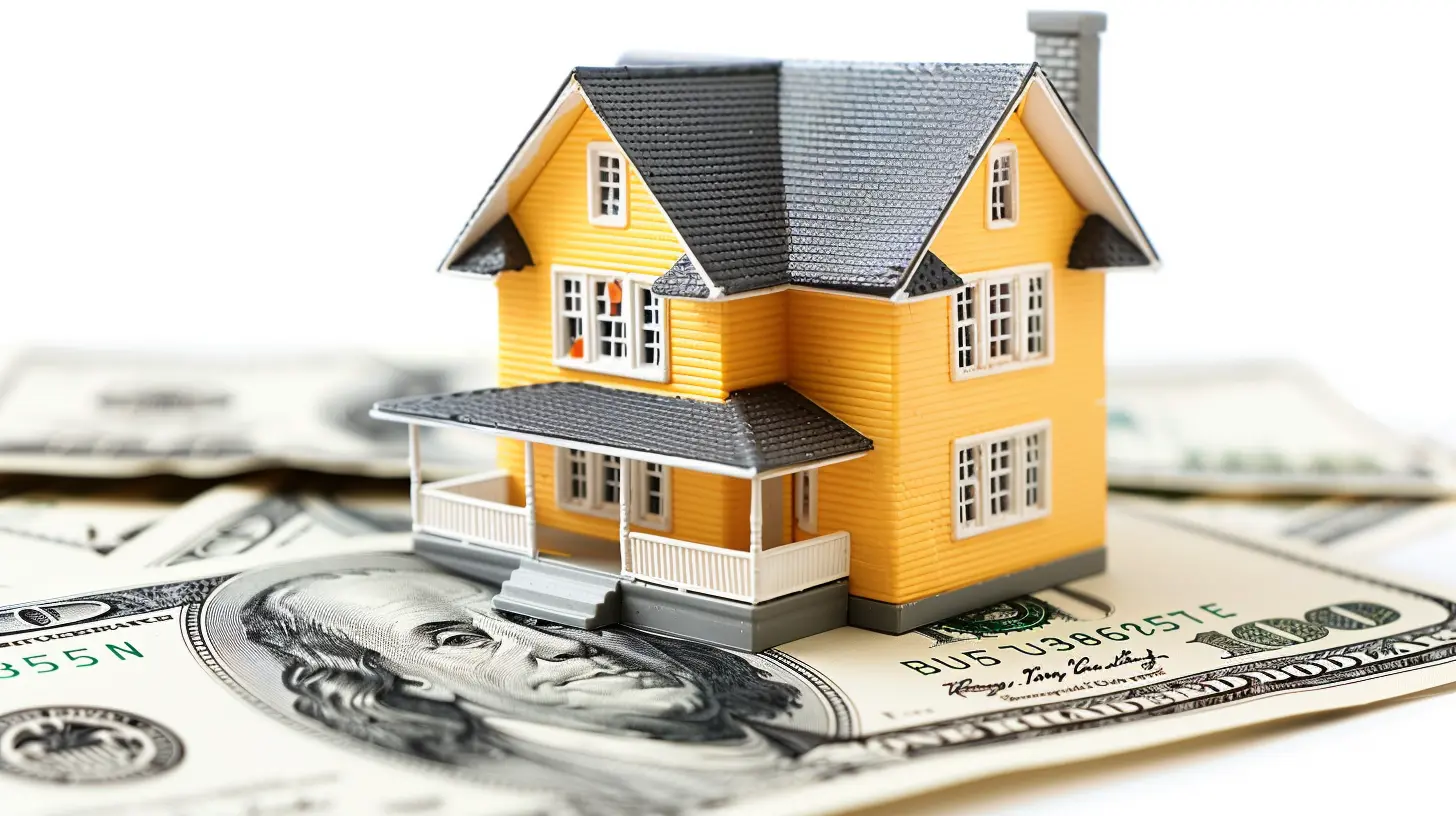House Flipping for Beginners: How to Get Started in Real Estate
10 August 2025
So, you've been watching all those transformation shows and thinking, “I could flip a house.” Well, guess what? You're not alone—and you're absolutely capable of doing it. House flipping has become a popular way to build wealth in real estate, even for beginners. But like most things worth doing, it takes more than just enthusiasm and a fresh coat of paint.
In this guide, we’ll break it all down for you—step by step. No fluff, no jargon. Just real talk about how to dip your toes into the world of flipping houses without drowning in debt or stress.
Let’s jump in.
What Is House Flipping?
Alright, let’s keep it simple. House flipping is when you buy a property, do some improvements—cosmetic updates, structural fixes, or maybe a complete overhaul—and then sell it for a profit.The key word here? Profit.
Flipping isn’t about buying a dream house to settle down in. It’s a short-term investment strategy focused solely on financial return.
People flip houses for two reasons:
1. To make quick cash.
2. To grow their real estate portfolio.
Sounds appealing, right? But here’s the deal: flipping homes isn’t a get-rich-quick scheme, no matter what late-night TV tells you. It’s hard work, takes research, a bit of risk, and a whole lot of patience.
Why House Flipping Appeals to Beginners
There’s something exciting about turning a run-down place into a gem. And for beginners in real estate, flipping can be a great entry point. Why?- You don’t need to hold the property long-term.
- You can start small.
- There's potential for quick returns (if done right).
- Resources and tools are more accessible than ever.
Thanks to HGTV and YouTube, first-timers feel more confident diving into projects. But let me be clear—no video tutorial can replace boots-on-the-ground experience. So, let’s make sure you walk into this with your eyes wide open.
Step 1: Understand the Market
Before you even think about swinging a hammer, you’ve got to understand your local market. Not all neighborhoods are created equal. Some are ripe for flipping, while others are money pits.What to Look For:
- Growing Areas. Are people moving in? Are new businesses opening? Is the school district improving?- Low Purchase Price, High Selling Potential. You want to buy low and sell high. The classic buy-low-sell-high strategy is alive and well in real estate.
- Low Inventory. If it’s a seller’s market, you’ve got a better shot at selling fast (and for more).
Not sure where to start? Talk to local real estate agents. Drive around. Check listings. Trust your eyes and ears—you’d be surprised what you can pick up just by paying attention to your surroundings.
Step 2: Set a Realistic Budget
Let’s talk money. This is where most beginners get tripped up. House flipping isn’t just about the purchase price—it’s about all the hidden costs, too.What You’ll Need to Budget For:
- Purchase price- Inspection fees
- Permit fees
- Renovation costs
- Holding costs (like utilities, insurance, property taxes)
- Real estate agent fees
- Closing costs
And always, always have a cushion. Things almost always go over budget. If you plan to spend $20,000 on renovations, set aside $25,000-$30,000—just in case.
Trust me, your future self will thank you.
Step 3: Secure the Right Financing
Unless you’re sitting on a pile of cash (and if you are, nice job!), you’ll need financing. Traditional mortgages don’t always work for flips, especially if the property isn’t in livable condition.Common Financing Options:
- Hard money loans – Quick, short-term loans with high interest rates.- Private money lenders – Friends, family, or investors willing to take a chance on you.
- HELOCs – Home Equity Lines of Credit, if you own another property.
- Cash-out refinancing – Pull equity from another investment.
Pick the financing that best fits your situation and timeline. Just be aware of interest rates, timelines, and risks—borrow with your brain, not just your heart.
Step 4: Find the Right Property
Now comes the treasure hunt. Not every fixer-upper is worth flipping. Look for homes that need cosmetic updates rather than full structural overhauls—at least in your first few flips.Red Flags for Beginners:
- Foundation problems- Roof replacements
- Termite infestations
- Outdated electrical systems
- Structural damage
These issues can spiral out of control (and budget). Stick to homes where you can add value through paint, flooring, kitchen and bathroom updates, and curb appeal. Think lipstick on a pig—but in a good way.
Step 5: Build Your Team
Here’s some truth: You can’t do this alone. You’ll need a solid team to make your flip a success.Key Players You’ll Want:
- Realtor – Helps you buy and sell (and knows the market inside-out).- Contractor – A trustworthy, licensed pro who can manage the rehab.
- Inspector – Finds issues before they become expensive surprises.
- Lender – Your financing guru.
- Title company – Handles legal aspects and closing.
Start networking early. Ask for referrals. Read reviews. Meet face-to-face if you can. A good team can save you from a bad flip.
Step 6: Manage the Renovation Like a Pro
Alright, this is the fun (and sometimes stressful) part—renovating. You'll get to decide what stays, what goes, and what gets a shiny new upgrade.But here’s the kicker—stick to your budget and timeline. Creeping scope and contractor delays are common reasons why flips go from profitable to painful.
Renovation Tips for Beginners:
- Focus on kitchens and bathrooms—they sell houses.- Don’t over-improve. You’re not building your dream home.
- Prioritize curb appeal. First impressions matter.
- Get multiple quotes for every job.
- Stay hands-on, even if you hire a contractor.
The goal is to create a home that looks great but doesn’t break the bank. Sometimes a little TLC goes further than a full gut job.
Step 7: List It, Market It, Sell It
You’ve made it this far—now it’s time to put that beauty on the market. A well-priced, well-marketed home can sell fast and for top dollar. Timing is everything.Tips for a Fast Sale:
- Hire a professional real estate photographer.- Use staging if the home is empty.
- Price it right (don’t get greedy).
- List during peak real estate seasons.
- Promote on social media AND through your agent.
Also, be emotionally ready to let go. This isn’t your forever home—it’s an investment. Don’t take lowball offers personally. Negotiate wisely and sell smart.
Avoid These Common House Flipping Mistakes
Flipping houses is a learning curve, but you can avoid major headaches by steering clear of these beginner blunders:1. Overpaying for the property.
2. Underestimating renovation costs.
3. Ignoring the neighborhood.
4. Trying to DIY everything.
5. Skipping the inspection.
6. Falling in love with the project.
7. Not having a backup plan.
Every mistake is a lesson, but why not learn from others first?
Is House Flipping Really Worth It?
That’s the million-dollar question, right?Here’s the honest answer: It depends.
If you do your homework, surround yourself with a good team, stay disciplined with your budget, and buy smart—you can absolutely make money flipping houses. But it’s not a guaranteed payday. It takes effort, attention to detail, and a willingness to get your hands dirty.
For beginners, house flipping can be an amazing way to start your journey in real estate investing. Just start small, stay humble, and learn as you go.
Remember: every successful flipper was a beginner once.
Final Thoughts
House flipping isn’t just about making houses pretty—it’s about making smart investments. If you’ve got a good eye, a bit of hustle, and some patience, this could be your ticket into the real estate world.Ready to roll up your sleeves? Then dive in, start small, and don’t be afraid to make a few rookie mistakes along the way. Just keep your goals in sight and your budget in check, and you’ll be flipping like a pro in no time.
You’ve got this.
all images in this post were generated using AI tools
Category:
Property FlippingAuthor:

Basil Horne
Discussion
rate this article
1 comments
Ford Edwards
Thank you for sharing this insightful guide on house flipping! Your tips are practical and approachable for beginners. It's refreshing to see such valuable information that can empower new investors to navigate the real estate market with confidence. Looking forward to more articles!
August 20, 2025 at 4:01 AM

Basil Horne
Thank you for your kind words! I'm glad you found the guide helpful. Stay tuned for more tips and resources!


